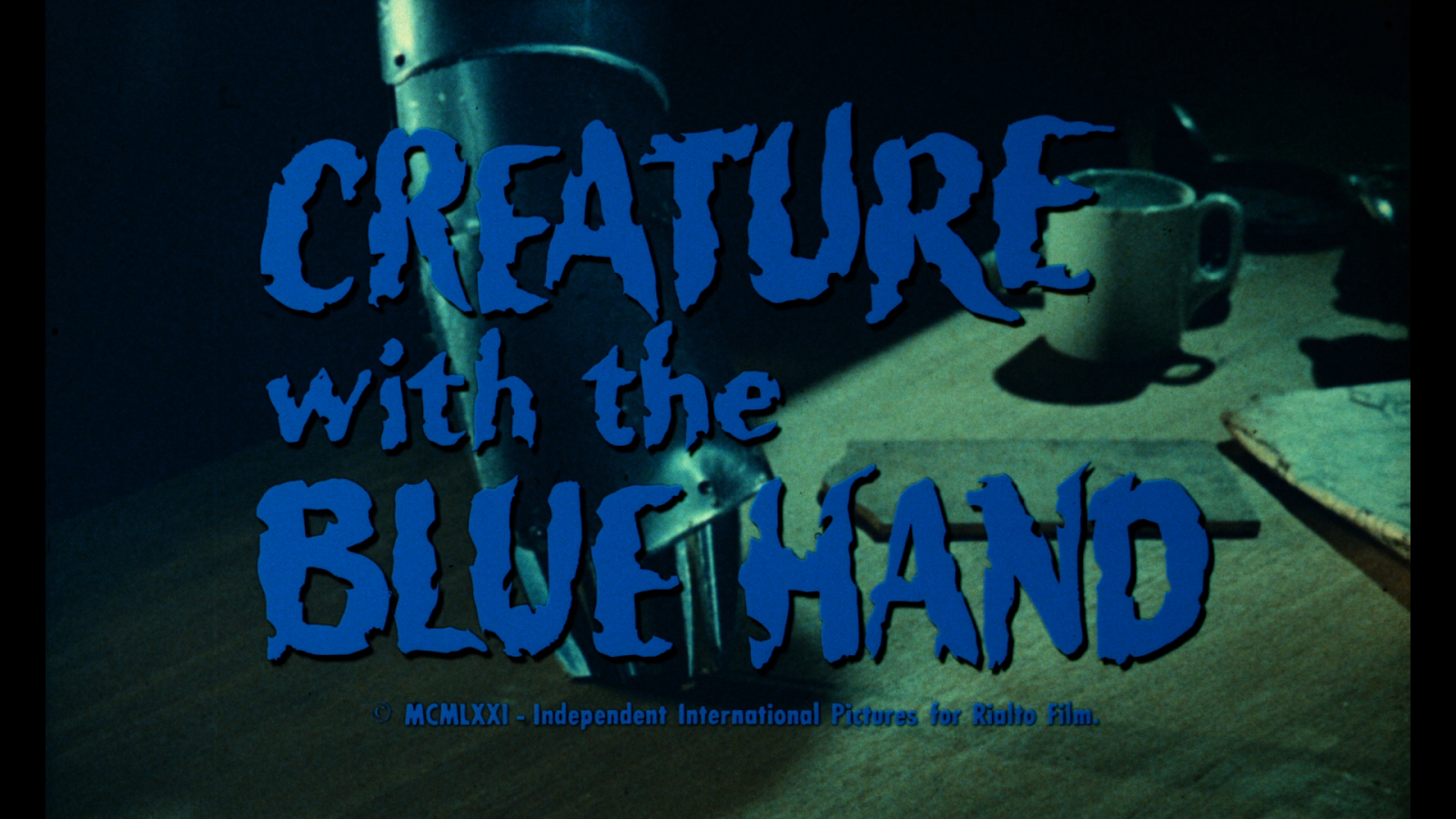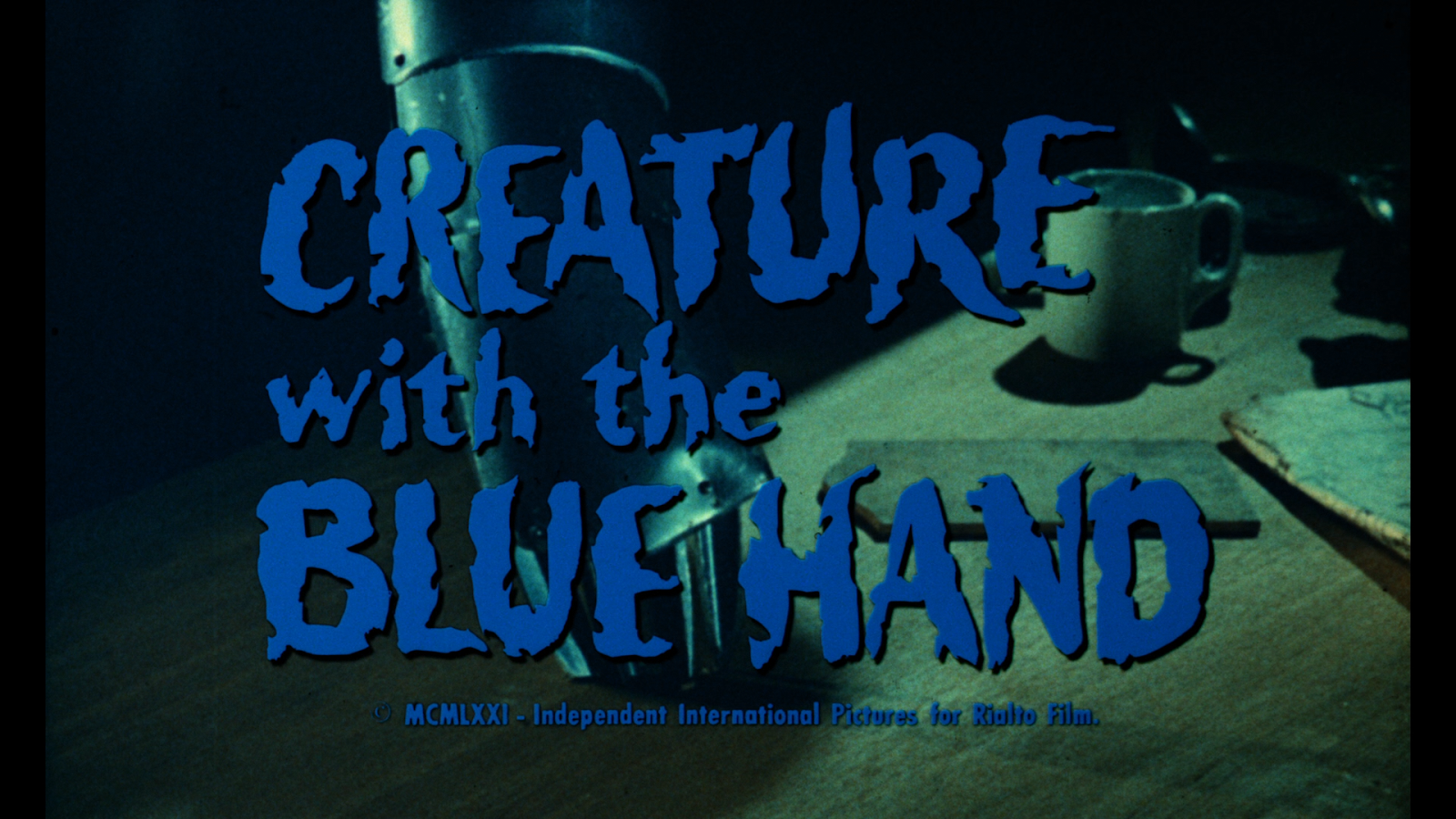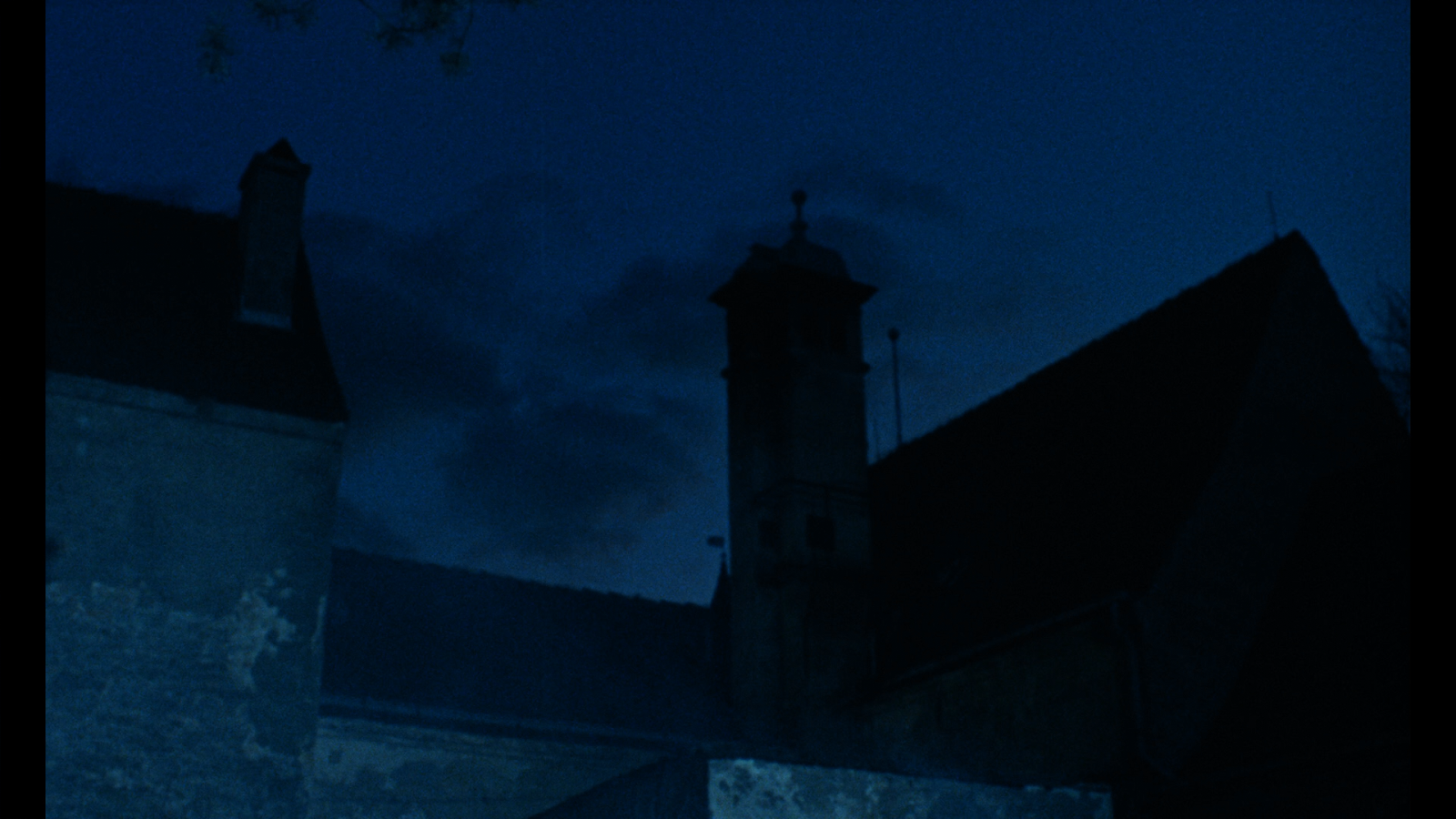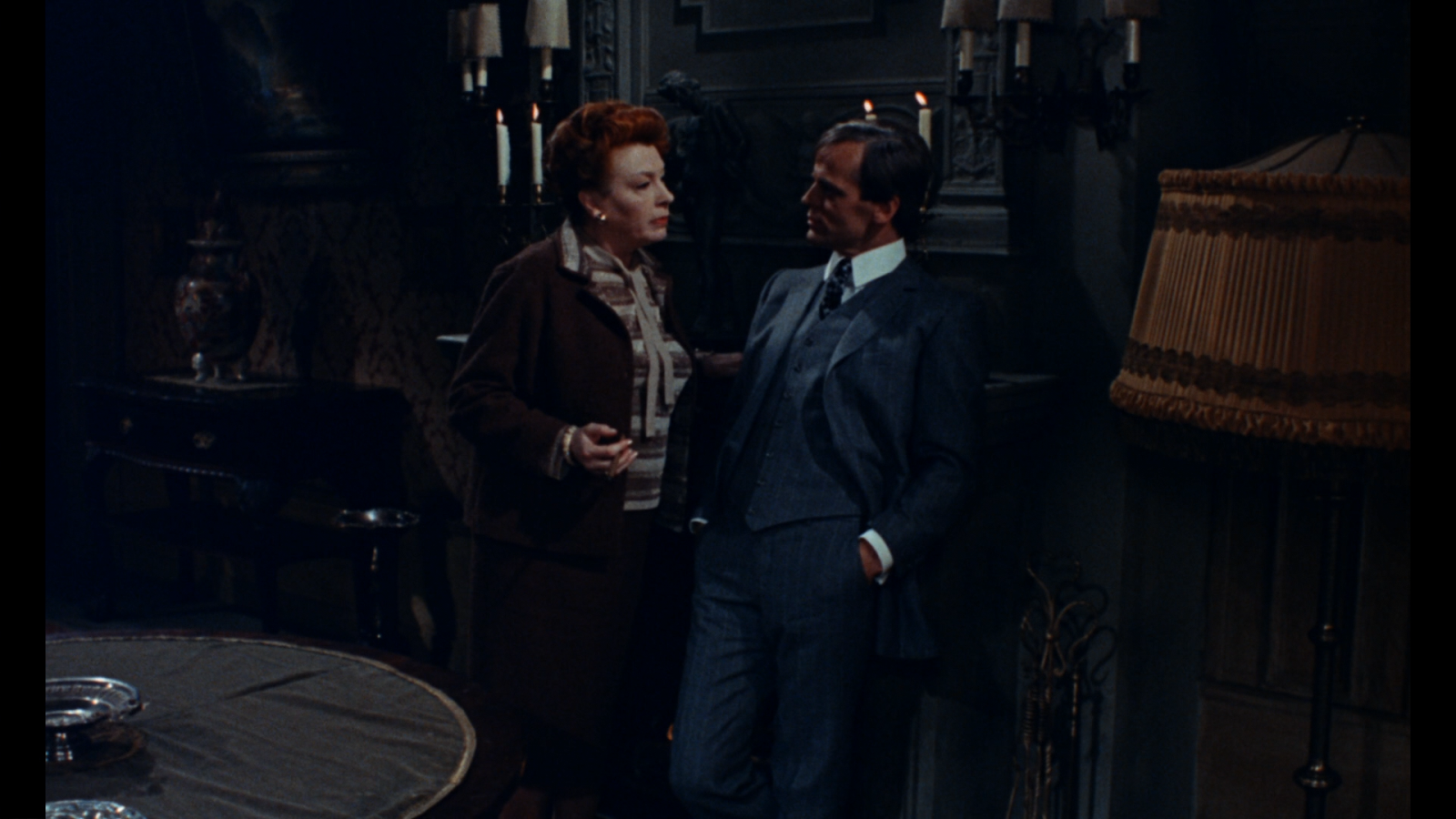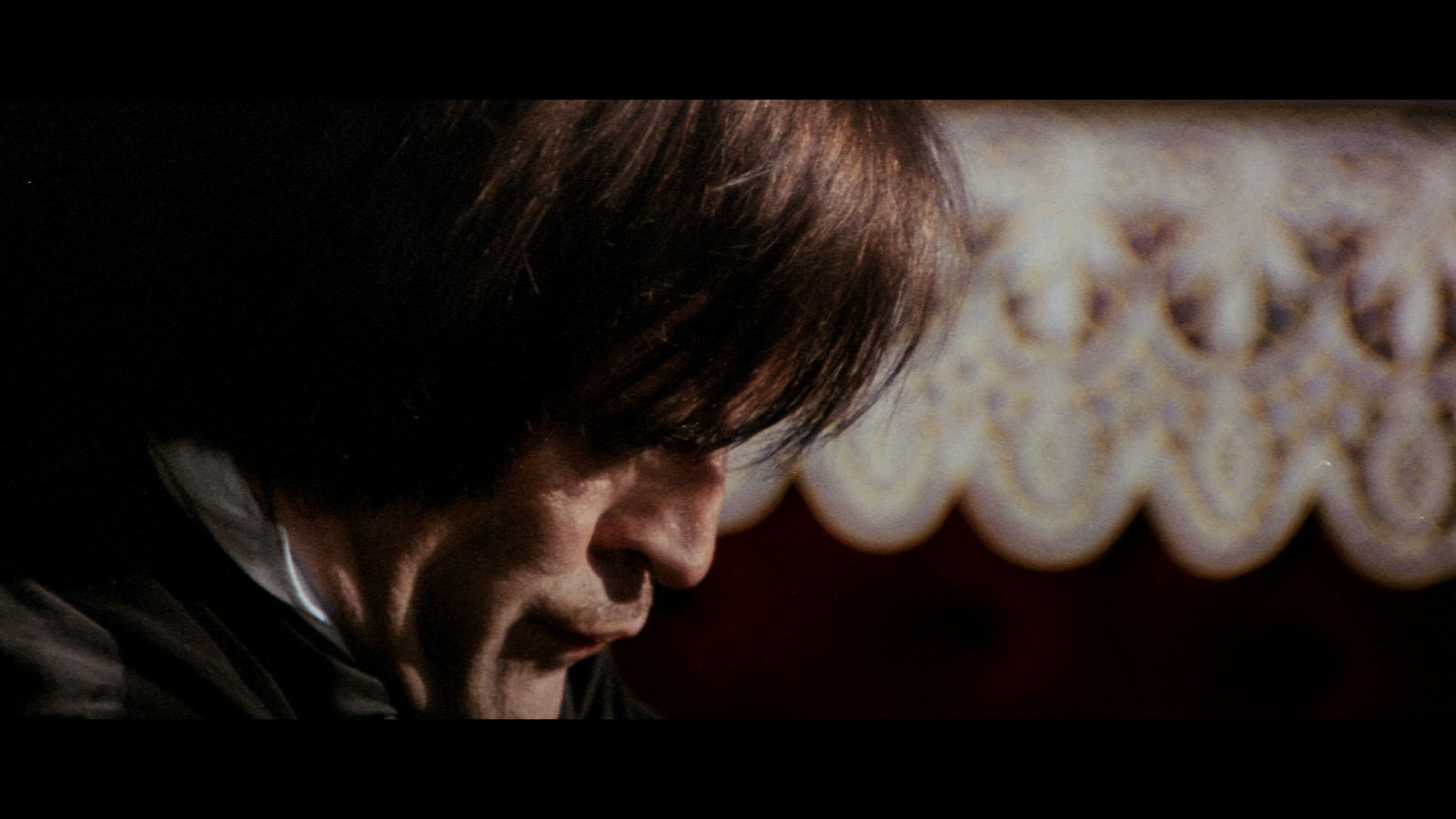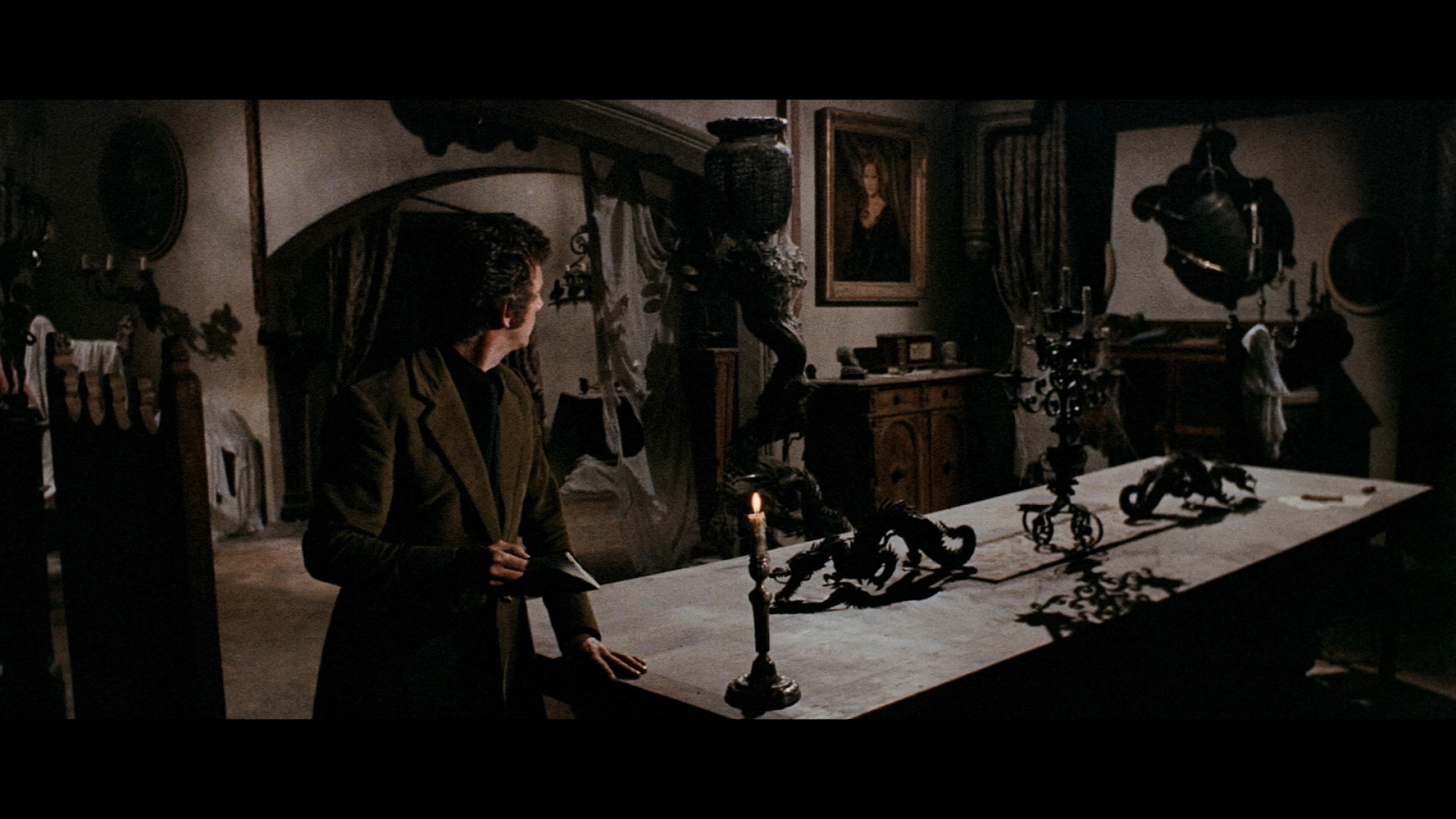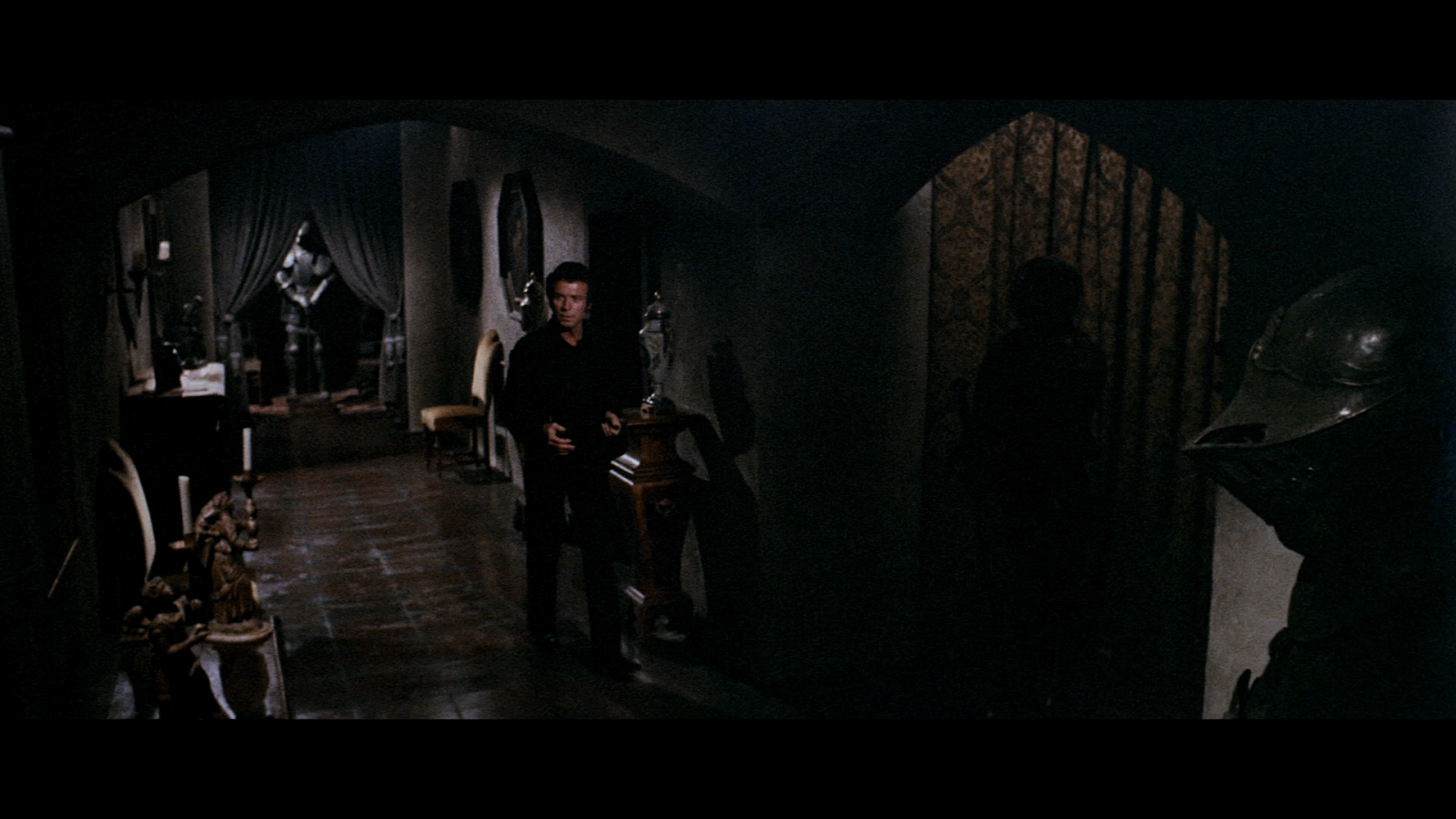Creature with the Blue Hand/Web of the Spider – Film Masters (Blu-ray)
Theatrical Release Dates: West Germany, 1967 (Creature with the Blue Hand), Italy, 1971 (Web of the Spider)
Directors: Alfred Vohrer (Creature with the Blue Hand), Antonio Margheriti (Web of the Spider)
Cast: Harald Leipnitz, Klaus Kinski, Carl Lange, Ilse Steppat, Hermann Lenschau, Diana Körner, Ilse Pagé (Creature with the Blue Hand), Anthony Franciosa, Michèle Mercier, Klaus Kinski, Peter Carsten, Silvano Tranquilli, Karin Field, Raf Baldassarre, Irina Maleeva, Enrico Osterman, Marco Bonetti, Vittorio Fanfoni, Carla Mancini, Omero Capanna (Web of the Spider)
Release Date: October 22nd, 2024
Approximate Running Times: 74 Minutes 18 Seconds (Creature with the Blue Hand), 93 Minutes 15 Seconds (Web of the Spider)
Aspect Ratio: 1.66:1 Widescreen / 1080 Progressive / MPEG-4 AVC (Creature with the Blue Hand), 2.35:1 Widescreen / 1080 Progressive / MPEG-4 AVC (Web of the Spider)
Rating: NR
Sound: DTS-HD Mono English, Dolby Digital Mono English (Both Films)
Subtitles: English SDH (Both Films)
Region Coding: Region A
Retail Price: $29.95
"For those craving a taste of "Euro-Kinski," two of Klaus Kinski's European features are now available in one creepy package. Presented for the first time in Blu-ray, Creature with the Blue Hand (1967) is a mystery-thriller about a series of grisly murders. It's one of several German films based on the novels of Edgar Wallace, many adaptations of which starred Kinski. This time he plays an escaped mental patient who might be the killer. Meanwhile, Web of the Spider (1971) is a classic haunted house tale from Italian maestro, Antonio Margheriti, with Kinski as none other than Edgar Allan Poe! It's a diabolical double dose from one of cinema's most controversial and unique figures!" - synopsis provided by the distributor
Video: 3.75/5 (Creature with the Blue Hand, Web of the Spider)
Here’s the information provided about Creature with the Blue Hand's transfer, "Scanned in 4K from 35mm archival elements."
Creature with the Blue Hand comes on a 50 GB dual layer Blu-ray.
Disc Size: 44.5 GB
Feature: 20.2 GB (Creature with the Blue Hand), 19 GB (The Bloody Dead)
Here’s the information provided about Web of the Spider's transfer, "a new 4K scan."
Web of the Spider comes on a 50 GB dual layer Blu-ray.
Disc Size: 26.6 GB
Feature: 25.4 GB
The sources are in great shape, colors look good, black levels fare well, compression is very good, and there appears to be some digital noise reduction. Also, though the image is generally crisp, at times it looks soft.
Audio: 3.75/5 (Creature with the Blue Hand, Web of the Spider)
Creature with the Blue Hand and Web of the Spider each come with two audio options, a DTS-HD mono mix in English and a Dolby Digital mono mix in English. For this review, I only listened to the DTS-HD mono tracks. Dialog comes through clearly, and everything sounds balanced. That said, there are some sibilance issues. Both films come with removable English SDH.
Extras:
Extras for Creature with the Blue Hand include original theatrical trailer for Creature with the Blue Hand (1 minute 49 seconds, Dolby Digital mono English, no subtitles), a re-created 2024 trailer for Creature with the Blue Hand (1 minute 48 seconds, Dolby Digital mono English, no subtitles), a featurette with author/screenwriter Pete Atkins titled A Man of Mystery: Inside the World of Edgar Wallace (13 minutes 34 seconds, Dolby Digital stereo English with removable English SDH), a featurette with C. Courtney Joyner titled Kinski Krimis: Inside the Rialto Films Adaptations (17 minutes 42 seconds, Dolby Digital stereo English with removable English SDH), an audio commentary with Stephen Jones and Kim Newman with optional English SDH, a bonus feature film titled The Bloody Dead (80 minutes 13 seconds, 1.66:1 aspect ratio, Dolby Digital mono English with removable English SDH), an archival audio commentary with Samuel M. Sherman for The Bloody Dead, and The Bloody Dead Raw Footage & Behind the Scenes (9 minutes 21 seconds, Dolby Digital mono English, no subtitles).
Extras for Web of the Spider include a re-created 2024 trailer for Web of Spider (1 minute 56 seconds, Dolby Digital mono English, no subtitles), original English language theatrical trailer for Castle of Blood (1 minute 42 seconds, Dolby Digital mono English, no subtitles), and an audio commentary with Stephen Jones and Kim Newman with optional English SDH.
Other extras include a 24-page booklet with an essay titled Creature with the Blue Hand and Germany’s Undersung Branch of Genre Cinema written by Nick Clark, and an essay titled Cobwebs and Castles Comparing Antonio Margheriti’s Castle of Blood and Web of the Spider written by Christopher Stewardson.
Summary:
Creature with the Blue Hand: Alfred Vohrer directed the film Creature with the Blue Hand. He is also known for making Dead Eyes of London, School of Fear, and The Horror of Blackwood Castle.
A psychopath with a blue hand terrorizes and kills a family in this narrative.
How can you go wrong with a film where Klaus Kinski portrays twin brothers? The other selling point is that one of the brothers is unhinged; unfortunately, there are very few moments where Klaus Kinski lets loose. His performance in Creature with the Blue Hand is one of his most subdued. That said, whenever he’s onscreen, these are the most enthralling moments.
Though the narrative has a lot of moving parts, there are an ample amount of red herrings. Unfortunately, the narrative is slow moving, never really builds momentum, and about halfway through becomes predictable. Despite having horror elements, Creature with the Blue Hand leans more towards a whodunit mystery. Fortunately, when it comes to the killer's weapon, an iron blue hand, and on screen carnage, these are two areas where Creature with the Blue Hand excels.
Twenty years after its original release, new footage was shot, and the film was renamed The Bloody Dead. This new footage does nothing to enhance the original film’s shortcomings. That said, though there have been numerous Krimi adaptations of Edgar Wallace, Creature with the Blue Hand is not one of the better ones.
Web of the Spider: Directed by Antonio Margheriti, whose notable films are The Virgin of Nuremberg, Castle of Blood, The Long Hair of Death, and Seven Deaths in the Cat's Eyes. Before Antonio Margheriti made a name for himself in the gothic horror genre, he was the premier Italian filmmaker working in the sci-fi genre, directing Assignment: Outer Space, Battle of the Worlds, and the Gamma One Quadrilogy (The Wild, Wild Planet, The War of the Planets, War Between the Planets, and Snow Devils).
The narrative revolves around a journalist who takes a bet to stay one night in a haunted castle.
There are a few genres that work better in black and white than they do when shot in color. And nowhere is this more evident than the Gothic horror genre and its striking use of black-and-white cinematography. By the early 1970s, gothic horror films shot in black and white were few and far between. Notable examples of gothic horror films shot in color are Hammer Films 1958 adaptation of Dracula and Roger Corman’s The Pit and the Pendulum.
Italian genre cinema throughout the 1950s, 1960s, and 1970s was filled with films that knocked off whatever genre was in vogue at the time. And though many Italian directors from this time frame were pigeonholed into a specific genre, there were a handful of directors who were able to be successful in multiple genres.
Case in point: Antonio Margheriti, an Italian director whose career spanned five decades. His most successful periods were the 1960s and 1970s. And it is his work within the Gothic horror genre during the 1960s that is arguably his best film as a director. In the 1970s, he would return to the Gothic horror genre with Web of the Spider. And for the first time, he would shoot a Gothic horror film in color. The Web of the Spider would mark the first of two gothic horror films that he shot in color. The other film is Seven Dead in the Cat’s Eye.
Content-wise, Web of the Spider is a remake of Castle of Blood, a film that he directed seven years before and shot in black and white. And though there are many areas where these two films are virtually identical, when it comes to their visuals, they are like night and day. That said, both films create a tremendous amount of atmosphere, albeit in different ways. The way in which Web of Spider-Lights scenes give the visuals an unnatural look that superbly reinforces the state of limbo that the protagonist finds himself trapped in.
Though the performances in Web of the Spider are very good, none of the cast ever came close to matching Barbara Steele’s (Black Sunday) captivating performance from Castle of Blood. The most memorable performance was by Klaus Kinski (Count Dracula) in the role of Edgar Allen Poe. His character fills a similar role to the character he portrayed in Jess Franco’s Marquis de Sade’s Justine, a name actor brought in for a role that required limited screentime. Other notable cast members include Irina Maleeva (Kidnap Syndicate), Michèle Mercier (Black Sabbath) in the role of Elisabeth Blackwood, and Anthony Franciosa (Tenebrae) in the role of Alan Foster. Ultimately, Web of the Spider is a very good remake and one of the best examples of an Italian gothic horror film in color.
Creature with the Blue Hand and Web of the Spider is another solid release from Film Masters, recommended.
Written by Michael Den Boer
